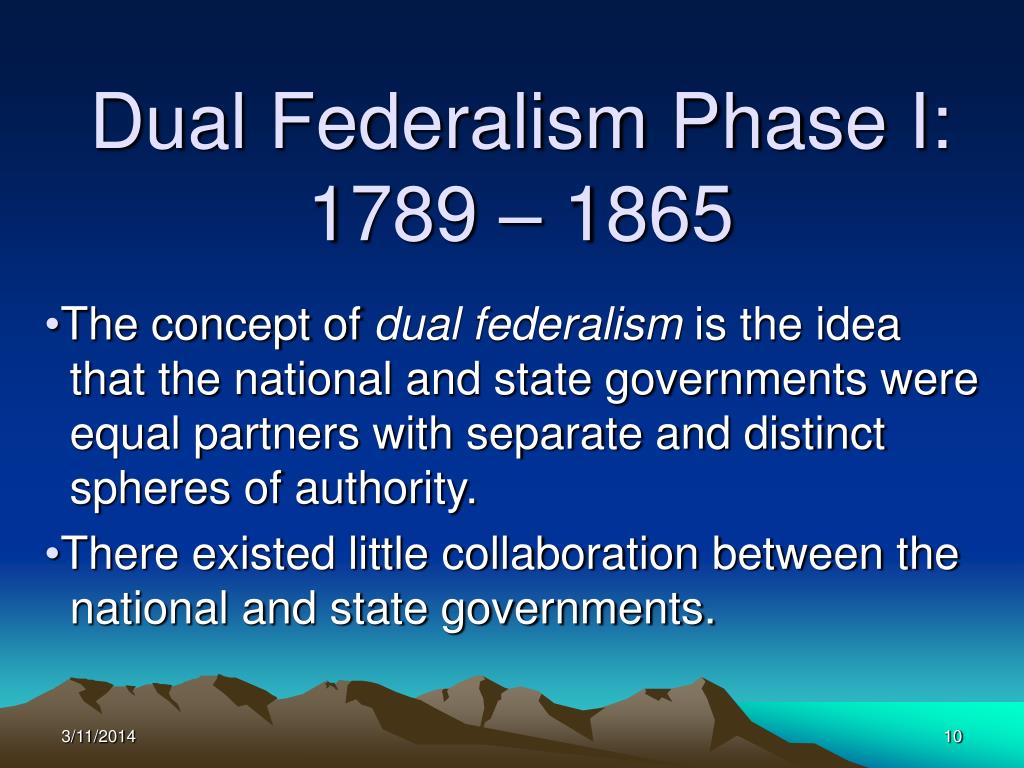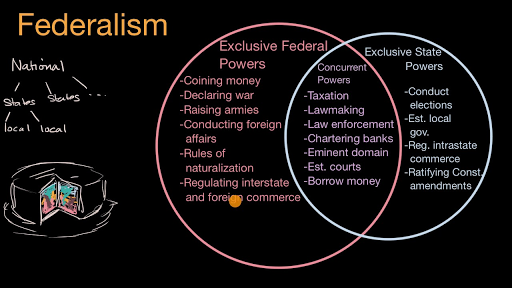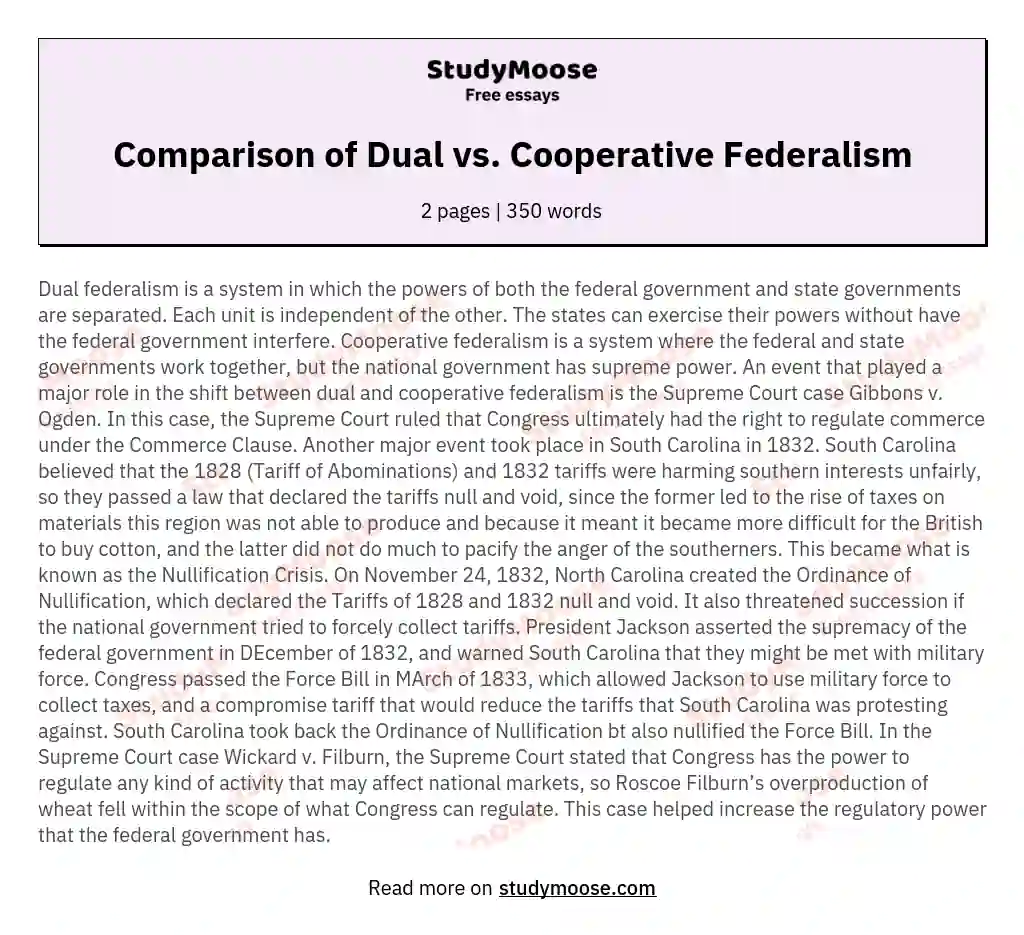Dual federalism, also known as layer cake federalism or divided sovereignty, is a model of federalism in which the federal and state governments are seen as distinct and separate entities. In this model, the federal government is responsible for certain enumerated powers, while the states retain all other powers not specifically delegated to the federal government.
The idea of dual federalism can be traced back to the drafting of the United States Constitution, which established a system of federalism in which the powers of the federal government were limited and enumerated, while the states retained all other powers. This was a departure from the previous system of government under the Articles of Confederation, in which the states had virtually unlimited power and the federal government had little authority.
Under dual federalism, the federal and state governments are seen as co-equals, with each having its own sphere of influence and jurisdiction. The federal government is responsible for matters that affect the entire country, such as national defense and foreign relations, while the states are responsible for matters that affect their own citizens, such as education and law enforcement.
One key feature of dual federalism is the concept of federalism as a "layer cake," with each layer representing a different level of government. In this model, the federal government and the states are seen as distinct and separate layers, with the federal government sitting on top of the states.
While dual federalism was the dominant model of federalism in the United States for much of its history, it has evolved over time. In the late 19th and early 20th centuries, the federal government began to take on a more active role in regulating the economy and addressing social issues. This led to the emergence of cooperative federalism, in which the federal and state governments work together to address national issues.
Today, the United States operates under a mix of dual and cooperative federalism, with the federal government and the states sharing power and responsibilities in various areas. Despite this, the idea of dual federalism remains an important part of the American system of government and is reflected in the Constitution's division of powers between the federal government and the states.







